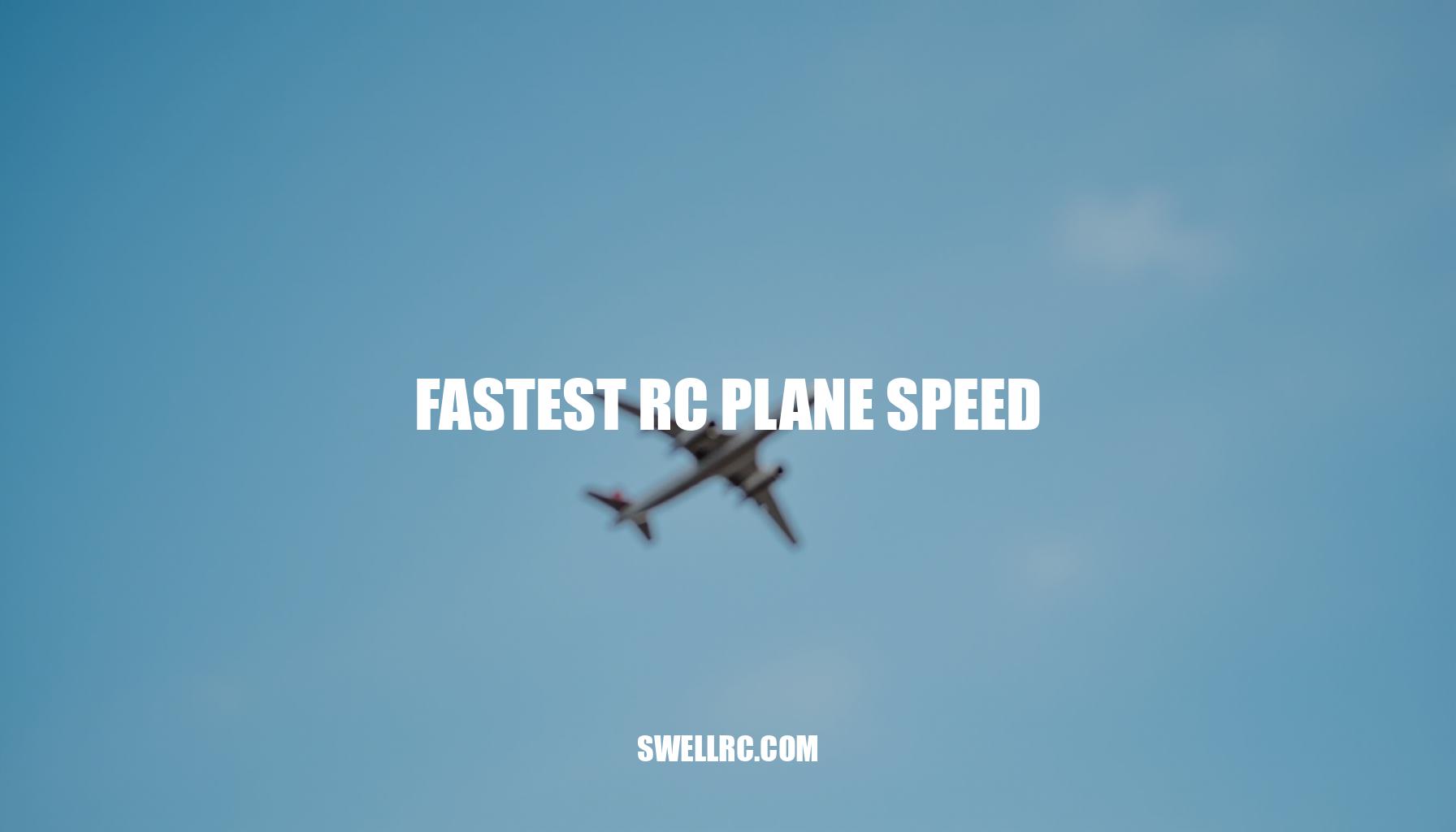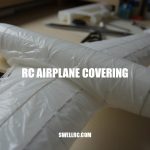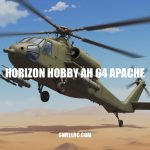The Fastest RC Plane Speed: Unleashing Aerodynamic Excellence
The first time I clocked an RC jet streaking past at over 300 mph, my hands shook on the transmitter — not from fear, but from pure awe. After countless trials, tweaks, and yes, a couple of lawn-darts, I finally understood why the pursuit of the fastest RC plane speed hooks so many of us: it’s the perfect collision of physics, craftsmanship, and courage. In this guide, we’ll dive into the cutting edge of RC speed — how pilots are breaking speed records, which designs unlock serious velocity, and what it takes to measure and master it safely.
High-speed RC enthusiasts constantly push the limits of aerodynamics, harnessing powerful brushless motors and efficient EDF jets to propel radio-controlled aircraft beyond conventional boundaries. If you’re just scouting the landscape of these incredible machines, start with this fastest RC plane roundup for a sense of what “blistering fast” really looks like: https://www.swellrc.com/fastest-rc-plane/.
The Science Behind RC Plane Speed: What Makes Them So Fast
When you boil it down, speed in RC planes is a battle against drag and mass, powered by an efficient energy system. Achieving maximum velocity requires a precise balance of several factors related to aerodynamics, thrust-to-weight ratio, and motor efficiency. Consider these key elements:
- Aerodynamics: Using slim fuselages, a small frontal area, smooth surfaces, tightly sealed gaps, and thin, low-drag airfoils significantly reduces parasite drag.
Incorporating tapered wings and clean control linkages enhances overall RC plane stability and performance more than most pilots realize.
- Power system: High-efficiency brushless motors or turbines paired with matched ESC timing optimize power delivery. Employing low-resistance wiring and selecting either a propeller or EDF system that stays within its efficiency band at your target RPM maximizes output. Remember, voltage controls shaft speed while current provides the necessary torque, making the balance of propeller vs jet power crucial.
- Thrust-to-weight ratio: Ensuring more thrust than weight is essential to maintain speed during vertical maneuvers and accelerate out of turns.
Minimizing dead weight supports both top speed and maneuverability.
- Batteries: Utilizing high C-rate packs with low internal resistance prevents voltage sag during full-throttle bursts. Effective pack temperature management sustains consistent battery capacity and performance throughout flight.
- Structure and stiffness: A rigid airframe that resists flexing at high speeds maintains wing incidence and control authority, which is vital for high-speed stability beyond 200 mph.
For ultralight efficiency tips like gap sealing, film coverings, and foam-core wing tips, the build primer is a valuable resource—even if your ambitions extend well beyond indoor flight speeds. In the end, achieving maximum top speed in a lightweight RC plane design is a harmonious blend of low drag, optimized specific power, and rock-solid control.
Record-Breaking RC Planes: The Current Speed Kings
When it comes to RC plane speed records, the absolute fastest aircraft today are dynamic soaring (DS) gliders, which achieve breathtaking speeds surpassing 500 mph by harvesting wind shear. Beyond these unpowered speed demons, the landscape of high-speed RC jet speed is dominated by powerful turbine and hot EDF builds pushing the boundaries in straight-line runs. Elite pilots in remote control jet racing events exploit carefully controlled conditions to break speed barriers, exemplifying the cutting edge of aerodynamic design and powertrain innovation.
| Name | Power | Top Speed | Wingspan | Notable Features |
|---|---|---|---|---|
| Kinetic DS (various) | Unpowered DS | 500+ mph | ~1.5–2.5 m | Carbon layups, ultra-rigid, flown in high wind shear |
| Custom Turbine Delta | Turbine jet | 300–350+ mph | 0.9–1.5 m | Tiny frontal area, high fuel energy density |
| Hotliner/Speed 400 class | Prop electric | 200–250+ mph | 0.9–1.6 m | Slim fuselage, high-voltage setups |
| High-end EDF racer | EDF electric | 200–300+ mph | 0.8–1.4 m | Multi-kW EDF units, careful inlet/duct design |
| Scale SR-71 projects | Mixed (EDF/turbine) | 150–250+ mph | varies | Fast for scale; compressibility-friendly planform |
For enthusiasts aiming at sleek EDF jets performance, understanding aerodynamic drag reduction and power optimization is essential. These concepts help achieve top-tier speeds in the 200–300 mph range seen in high-end EDF racers. Likewise, turbine-powered RC jets leverage a small frontal area and the high energy density of fuel to surpass 300 mph in straight lines, pushing the limits of turbine RC jets.
If you’re inspired by iconic, speed-driven scale builds, exploring projects centered around the SR-71 Blackbird can be immensely rewarding, especially given their compressibility-friendly design that balances speed and scale fidelity.
For a deep dive into the best EDF jets on the market and tips on maximizing your model’s velocity, check out this comprehensive buyer’s guide: Best EDF Jet. Meanwhile, for fans of historic speed legends, the SR-71 Blackbird overview offers both technical insights and inspiration: SR-71 Blackbird Remote Control Plane.
Watching a finely tuned RC jet finally crack its previous top speed, especially after overcoming timing-trap challenges, is one of those exhilarating moments in remote control jet racing that enthusiasts cherish for years to come.
Engineering for Maximum Velocity: My Testing Experience
Chasing speed became a methodical ritual for me: log a baseline, change one variable, log again. Small steps add up fast in the quest how to improve RC plane performance. The most significant factors that moved the needle involved precise adjustments and upgrades that enhanced flight efficiency and speed measurement accuracy.
- Prop pitch tweak: Changing from a 6×5.5 to a 6×6.5 propeller increased speed by approximately 7 mph, but only with careful amp checks to balance propeller vs jet power efficiency.
- Cleaner canopy seam and taped hinge gaps: These aerodynamic refinements yielded a 3–4 mph increase on radar readings, improving RC plane stability and reducing drag.
- ESC timing adjustment: Moving from Mid to High timing settings, while closely monitoring temperature, led to a 2–3 mph boost and a smoother unload at the top end, highlighting the importance of proper ESC calibration.
- Battery upgrade: Switching to batteries with higher C ratings and lower internal resistance (IR) maintained voltage better, resulting in 4–6 mph gains on identical passes, emphasizing enhanced battery performance.
- CG and thrust angle tweaks: Moving the center of gravity 2–3 mm aft and removing 1° of downthrust contributed to steadier, longer full-throttle runs, critical aspects of RC plane stability.
Progress is meticulously tracked using GPS loggers and radar side-by-side; when both agree within a few mph, confidence in the data rises remarkably, ensuring that the speed measurement methods are reliable.
For more on benchmarks and detailed measurement techniques, this explainer is an excellent resource. Above all else, making incremental step changes, maintaining ample altitude, and practicing abort discipline are essential to keep both pilots and models safe while pushing for that extra few mph.
Beyond Planes: Comparing RC Speed Realms
When considering RC speed comparison across various terrains and mediums, the fastest RC models demonstrate remarkable engineering tailored to their environment. For instance, the fastest RC car achieves astonishing straight-line speeds on meticulously prepared surfaces, leveraging minimal rolling resistance to push boundaries. Contrastingly, the fastest RC boat contends with hydrodynamic forces such as hull drag and water chop, which significantly impact achievable top speed benchmarks.
Large-scale gasoline-powered RC cars often prioritize torque and visual impact over outright speed, offering a different dimension to performance metrics. In the aerial realm, RC planes benefit from minimal contact drag but must account for aerodynamic constraints like compressibility and structural loads, necessitating clean, well-trimmed airframes for optimal speed.
- RC Cars: Staggering peak speeds on smooth, prepared tracks with minimal rolling friction.
- RC Boats: Balancing hydrodynamics and hull design to overcome water resistance and turbulence.
- Gasoline-Powered Large-Scale Cars: Trading raw speed for torque and spectacular mechanical performance.
- RC Planes: Exploiting aerodynamic efficiency and structural integrity to achieve sustained high-speed passes.
This blend of physics and engineering highlights the nuanced RC plane vs car vs boat dynamics, illustrating how each class contends with unique challenges — from aerodynamic constraints in the sky to hydrodynamics on water, and frictional considerations on land — making their respective speed achievements all the more impressive.
Getting Started: How to Build Your Own Speed Demon
When you aim to build fast RC plane, focusing on the core components is essential for achieving stable high-speed flight. Start with an airframe that is slim, stiff, and features a low frontal area, ensuring minimal protrusions and tight linkages to reduce drag. For power, select a high-quality brushless motor or turbine carefully matched to your target speed band.
The ESC and battery selection are critical: choose an ESC with sufficient current headroom, proper timing settings, and a robust BEC or a separate Rx pack to maintain reliable operation. When deciding between EDF vs prop, optimize the propeller pitch and diameter to keep amps in check at full throttle (WOT), or ensure EDF units have efficient inlets and outlets for maximum thrust. The battery should have a high C-rate, low internal resistance (IR), and be sized for brief full-power runs without experiencing voltage collapse.
Here is a checklist of these essential components for RC speed:
- Airframe: slim, stiff, low frontal area; minimal protrusions and tight linkages.
- Power: high-quality brushless motor or turbine matched to target speed band.
- ESC: current headroom, proper timing, strong BEC or separate Rx pack.
- Prop/EDF: pitch and diameter tuned to keep amps in check at WOT; EDF with efficient inlets/outlets.
- Battery: high C-rate, low IR, sized for brief full-power runs without voltage collapse.
Tuning principles emphasize starting with reliable cooling, then iterating prop pitch or EDF load and timing in small steps, verifying temperature readings, and keeping detailed logs. Always conduct responsible testing at a spacious, safe field equipped with a spotter and a clear pass corridor for safety and performance validation. For inspiration and parts sourcing, browsing quality builds at a specialist retailer like Esprit RC Planes can ignite your creativity and ensure you use the best components for your high-speed RC plane project.
Conclusion: Chasing the Next Speed Record
Today’s fastest RC plane speed frontier stands as a testament to years of relentless innovation in RC aviation. This remarkable progress stems from ruthless drag reduction techniques, cutting-edge efficient power systems, and pilots who meticulously refine every detail. Whether you’re fascinated by 500+ mph DS gliders or the breakthrough EDF and turbine advances powering missiles that exceed 300 mph, the pursuit of speed records continues to push the boundaries.
Key factors driving high-performance radio-controlled aircraft include:
- Advanced aerodynamic designs minimizing drag
- Enhanced propulsion technologies leveraging EDF and turbine breakthroughs
- Precision control and pilot expertise refining flight dynamics
The frontier of RC plane speed is ever-evolving, and there’s no telling what extraordinary achievements await.
In the world of RC aviation, the sky isn’t the limit — it’s just the starting line.
Frequently Asked Questions
- What is the fastest RC plane in the world right now?
In absolute terms, dynamic soaring (DS) gliders hold the crown, with documented flights exceeding 500 mph by exploiting strong wind shear. In powered straight-line runs, elite custom turbine and high-power EDF builds commonly reach 300+ mph, with higher claims requiring careful independent verification. - How do RC planes achieve such high speeds?
They minimize drag with sleek airframes, maximize thrust-to-weight with efficient motors or turbines, optimize props/EDF fans for the target RPM, and use high C-rate, low-IR batteries to prevent voltage sag. Structural stiffness and precise control tuning keep the model stable at speed. - Can an RC plane go faster than a real aircraft on a scale basis?
Yes. Many RC models exceed their full-scale counterparts’ performance when normalized for scale (scale speed). While actual Mach numbers remain subsonic, RC gliders in DS and high-power racers can achieve remarkable scale-speed equivalents. - What components determine the top speed of an RC plane?
Key factors include the motor or turbine’s power, ESC efficiency and timing, prop/EDF selection, battery voltage/C-rating/internal resistance, aerodynamic cleanliness of the airframe, and overall rigidity and alignment. - How do you safely fly high-speed RC planes?
Do meticulous preflight checks, perform range and failsafe tests, use a large, clear flying site with a spotter, keep high-speed passes away from people, climb out before turns, monitor temps and logs, and adopt a strict abort plan for any anomaly. - What’s the difference between EDF and jet-powered RC planes?
EDF jets use electric ducted fans powered by batteries—simpler, cleaner, and quieter. Turbine jets are true miniature jet engines burning fuel—higher power density and realism but more cost, maintenance, heat, and spool-up time. - Are there DIY ways to make RC planes go faster?
Yes: seal hinge gaps, smooth seams, reduce protrusions, sharpen trailing edges, upgrade to higher C batteries, fine-tune prop pitch or EDF load, optimize ESC timing, stiffen the airframe, and trim CG/throws for low-drag, stable passes. - How does weather or altitude affect RC plane speed performance?
Higher altitude and warmer air reduce density, lowering both drag and thrust; results vary by setup. Tailwinds boost ground speed on passes, while headwinds reduce it. Turbulence hurts stability; DS specifically requires strong, laminar wind shear to set records.



